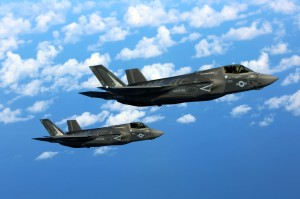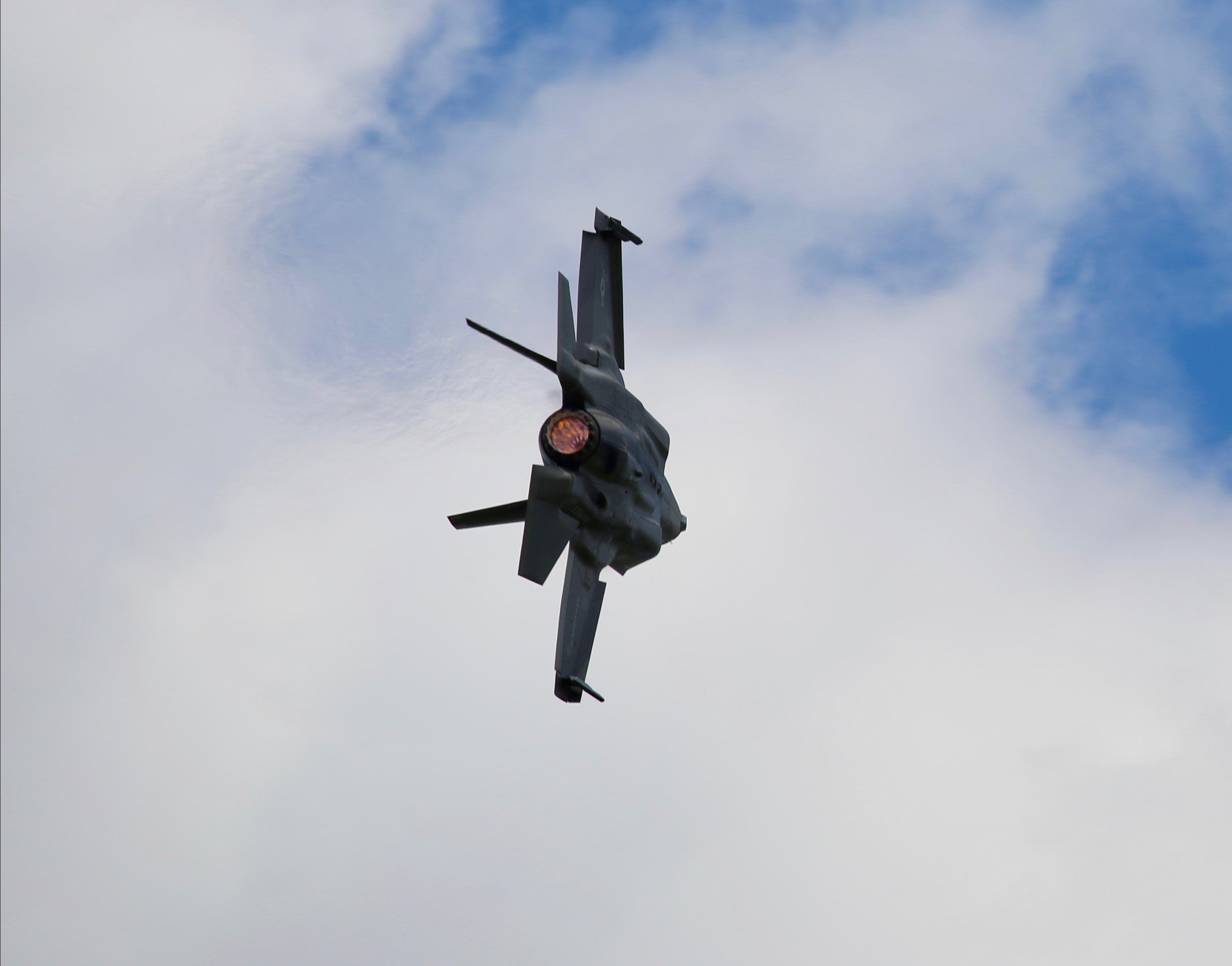Warlords Series 11: The B as a Strategic Asset
Following our visit to MCAS Beaufort and to the USS Wasp, it was time to reflect back on what the coming of the F-35B meant for the evolution of USMC operations.
In this article first published on August 22, 2015, I drew together material from other visits and the work of Ed Timperlake to discuss the B as a strategic asset.
That article follows:
Marine Corps Air Station Beaufort, South Carolina
Two F-35B joint strike fighter jets conduct aerial maneuvers during aerial refueling training over the Atlantic Ocean, Aug. 13, 2015.

The mission of Marine Fighter Attack Training Squadron 501 is to conduct effective training and operations in the F-35B in coordination with joint and coalition partners in order to successfully attain the annual pilot training requirement. VMFAT-501 is based at Marine Corps Air Station Beaufort, South Carolina.
The British are already training there and are an integral part of the USMC effort, including the key mission of ship integration.
The Italians will be coming next.
And Lt. General Preziosa, the head of the Italian Air Force, understands why getting Bs is a smart strategic choice.
For the kind of missions we face we needed the flexibility which the B can add to the fleet.
We need to go to the mission not the airfield.
We will operate in many areas where there are only short runways; the B allows us to operate in those conditions.
We can mix the fleet and operate at sea on land, on our own ships or own others.
It is the kind of flexibility, which we see as crucial to a 21st century setting.
I will give you an example of what we don’t want.
We planned to operate with the USMC in Afghanistan.
But we were three months later in the deployment than we intended because our Tornados could not operate in the same conditions as the USMC.
We had to take three months to build out the air base from which we would operate with them.
Time is crucial to many of the missions in which we will be engaged.
The Bs give me a more rapid insertion aircraft.
The B provides significant strategic advantages to having to rely on fixed airfields, as is being discovered by the USAF operating off of Turkish airfields.
The B will provide an option to operate in Kurdistan for a period of time, and LEAVING rather than working with the Turks whose agenda is clearly not the same as that of the United States.
And the ability to operate off of ships or expeditionary bases provides a significant augmentation capability and flexibility as well.
The F-35 is part of enabling a coalition of like-minded states and of shaping a global fleet capability.
Notably, allies worldwide are building ships upon which the F-35B could land and operate.
Coalition partnerships need to be shaped by who really contributes and who you really wish to work with, rather than needing someone’s airfield.
Ed Timperlake in a 2012 piece identified a number of key contributions which the F-35B brings to the strategic calculus:
Now something entirely new and revolutionary can be added to an Air Force, the VSTOL F-35B.
Traditionally the VSTOL concept, as personified by the remarkable AV-8, Harrier was only for ground attack. To be fair the RAF needed to use the AV-8 in their successful Falklands campaign as an air defense fighter because it was all they had.
The Harrier is not up to a fight against any advanced 4th gen. aircraft—let alone F-22 5th Gen. Fighters that have been designed for winning the air combat maneuvering fight (ACM) with advanced radar’s and missiles.
Now though, for the first time in history the same aircraft the F-35 can be successful in a multi-role.
The F-35, A, B &C type, model, series, all have the same revolutionary cockpit-the C4ISD-D “Fusion combat system” which also includes fleet wide “tron” warfare capabilities.
There has been a lot written about the F-35B not being as capable as the other non-VSTOL versions such as the land based F-35A and the Large carrier Battle Group (CBG) F-35, the USN F-35C.
The principle criticism is about the more limited range of the F-35B. In fact, the combat history of the VSTOL AV-8 shows that if properly deployed on land or sea the VSTOL capability is actually a significant range bonus. The Falklands war, and recent USN/USMC rescue of a Air Force pilot in the Libyan campaign proved that.
The other key point is limited payload in the vertical mode. Here again is where the F-35 T/M/S series have parity if the F-35B can make a long field take off or a rolling take off from a smaller aircraft carrier-with no traps nor cats needed it can carry it’s full weapons load-out.
The Royal Navy just validated this point by reversing back to the F-35B.
http://sldinfo.com/the-uk-allies-and-re-thinking-the-f-35c/
Give all aircraft commanders the same set of strategic warning indicators of an attack because it would be a very weak air staff that would let their aircraft be killed on the ground or flight deck by a strategic surprise.
Consequently, the longer take off of the F-35 A, B or C with a full weapons complement makes no difference. Although history does show that tragically being surprised on the ground has happened.
Pearl Harbor being the very nasty example. Of course, USN Carrier pilots during the “miracle at Midway” caught the Japanese Naval aircraft being serviced on their flight deck and returned the favor to turn the tide of the war in the pacific.
In addition to relying intelligence, and other early warning systems to alert an air force that an attack is coming so “do not get caught on the ground!” dispersal, revetments and bunkers can be designed to mitigate against a surprise attack.
Aircraft survivability on the ground is critical and a lot of effort has also gone into rapid runway repair skills and equipment to recover a strike package. All F-35 TMS have the same advantages with these types of precautions.
The strategic deterrence, with tactical flexibility, of the F-35B is in the recovery part of an air campaign when they return from a combat mission, especially if the enemy successfully attacks airfields.
The featured photo shows an F-35B flying at the Beaufort Air Show, 2019 and is credited to Second Line of Defense.

